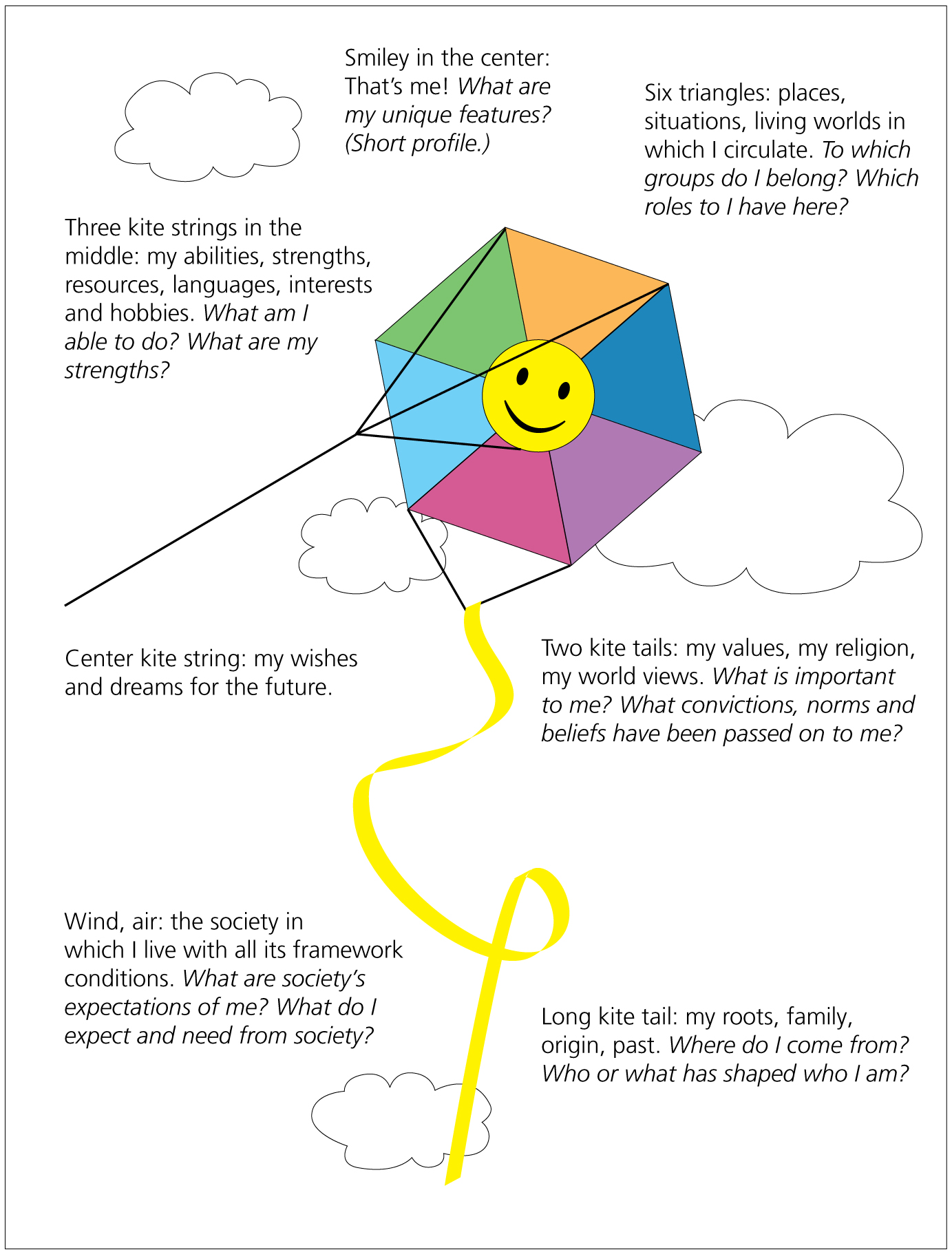Hints:
The reflection about one’s own multicultural identity can easily be extended to a project of 2–3 weeks, whereby the individual parts or facets of the kite are more deeply analyzed. In doing so, the reflection questions are adjusted according to the students‘ proficiency levels. The project also lends itself easily for a collaborative implementation together with mainstream education teachers or parent involvement. It is also a nice highlight when the kites are flown at the conclusion of the project. This would require another step, however, (transfering the kite outlines onto appropriate paper and providing them with an appropriate, airworthy frame).
Procedure:
- To begin the sequence, the instructor presents the kite with its parts as an identity symbol. S/he shows the cut-out kite as an example of the end product and explains the worksheet. The worksheet shows the outlines of the kite and references the parts and for which they stand. Each part represents a living environment and partial identity, e. g., family, school, friendship, neighborhood, etc.; each partial identity and living environment belongs to a corresponding role – daughter, son, student, friend, relative, etc. The sum of all partial identities and roles makes up a personality and identity. The explanatory introductory discussion should ensure that all students understand the following assignments.
- First, the students put a smiley face in the middle of the kite (hand drawn or glued on picture). Around the smiley, they write in key words the most important information about themselves (age, class, siblings, language, some characteristics…).
- They then label the various parts of the kite. Following the matrix on the worksheet, they enter the information to the individual facets. It is a good idea to use the front side of the kite for the living environments in the host country and the backside for the ones in the country of origin. If the six triangles are insufficient, they (or some of them) can also be divided in half.
- In a subsequent step, the class discusses the varied and concurrent affiliations or partial identities, respectively. To further the students‘ awareness, the teacher suggests partial identities and roles, such as “cousin”, “athlete”, “student”, “club member”). Those students with such an entry on their kite stand up to announce it.
- It would also be possible to present and explain the kite concept in groups of four. As a prompt for discussion, the instructor could ask and write questions on the board, such as „What makes up my identity? What are the most important aspects of my identity? To which groups do I feel I belong? Which strengths and resources do I possess, based on my partial identities/living environments? What is important to me? Which beliefs, norms and ideas have been passed on to me?“
- The final discussion round centers on the influence of the various identity parts. The prompts for the discussion should be age-appropriate and revolve around the following themes:
- Which identity parts are particularly important for you and why?
- Which identity parts are not at all relevant for you and why?
- Are there aspects or roles, which are mostly (or only) important in your country of origin?
- Is there a ranking of the partial identities?
- Are there partial identities which are ascribed to you from outside, from society, although you cannot identify with them?
- What role does your language play for your identity?
- Which partial roles take up a large amount of space in your kite symbol, which ones particularly little?
- Are there roles that you particularly like, or rather dislike, respectively?
- Are there conflicts or contradictions between these roles, or do they complement each other?
- Have you learned something new about yourself and about the group?
Kite worksheet with explanations







